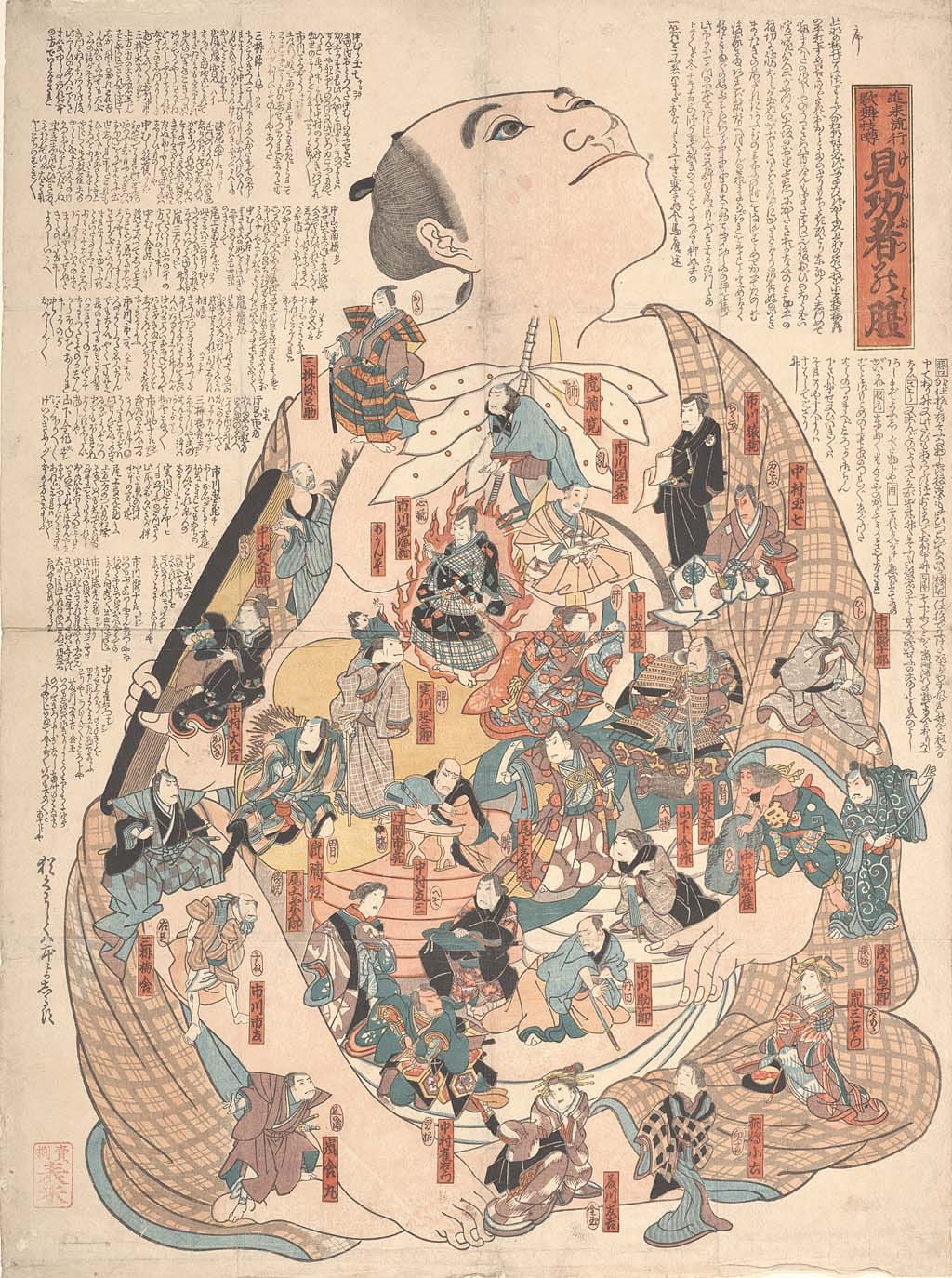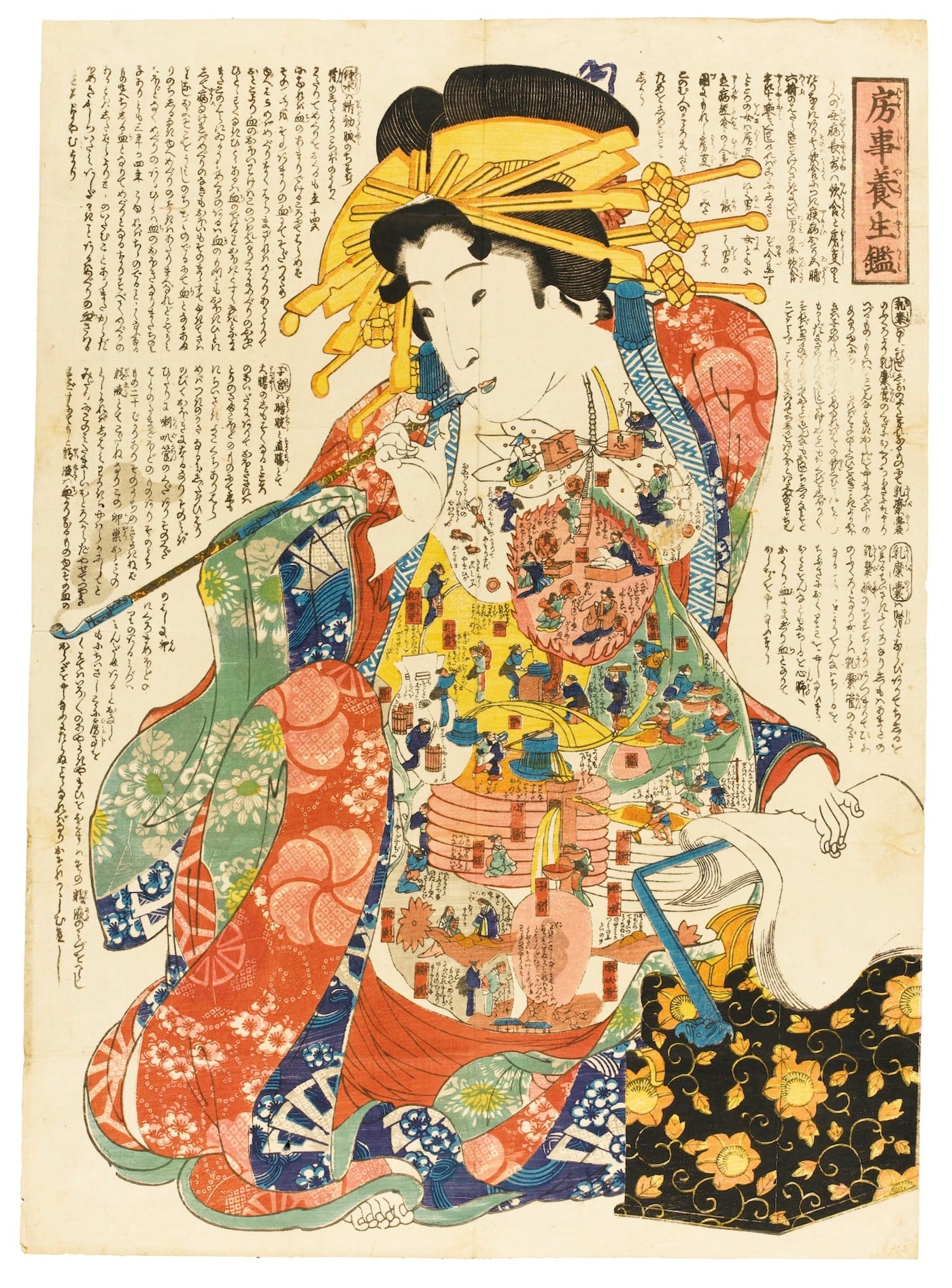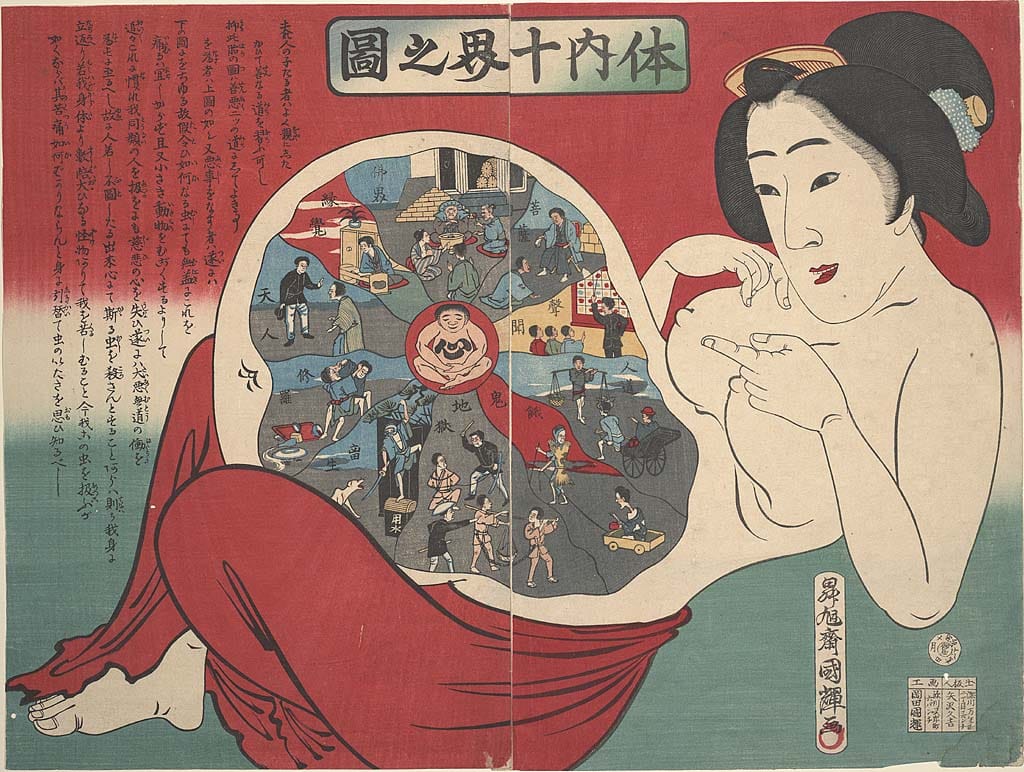Human Anatomy as Portrayed in Woodblocks of 19th-Century Kabuki Actors
The opening of Japan in the 19th century after its isolationist Edo period caused an influx of foreign influence, including Western approaches to medicine.

The opening of Japan in the 19th century after its isolationist Edo period caused an influx of foreign influence, including Western approaches to medicine. Woodblock prints from this era, often in the vibrant ukiyo-e style, captured this transition, with kabuki actors representing internal processes, and Buddhist deities battling cholera and measles.
The University of California, San Francisco, has a particularly rich collection of over 400 of these works in the UCSF Japanese Woodblock Print Collection. A few, brought to our attention by writer Rabih Alameddine on Twitter, depict anatomy with a series of characters illustrated right on the human body, including kabuki actors in a print by an unknown artist to portray internal bodily functions.
The illustration is similar to work by famed ukiyo-e woodblock artist Utagawa Kunisada, depicting digestion. According to Sotheby’s, which sold an example of the print last December, the tiny samurai on the body of a man drinking a cup of tea with a bowl of fish are miming everything from the gall bladder controlling the order, to a scholar situated in a flaming heart, the mounds of books alongside helping his guidance of the life processes. Another print, believed to be by a student of Kunisada, has a smoking courtesan with annotated figures representing “sexual life rules.”
UCSF has large-scale reproductions of some of the woodblocks in their library, where their medical students study. While the prints dramatically represent a better understanding of internal medicine in Japan, the opening of the country had its own health repercussions with new contagious diseases. These epidemics were often blamed on foreigners, and they weren’t always wrong, such as the case of cholera a Buddhist deity is warding off in one 1861 print. The miniature people in the human machines are just part of a complicated meeting of the spiritual, cultural, and medicinal in 19th-century Japanese medicine.




h/t Rabih Alameddine
View more prints from the UCSF Japanese Woodblock Print Collection online.





